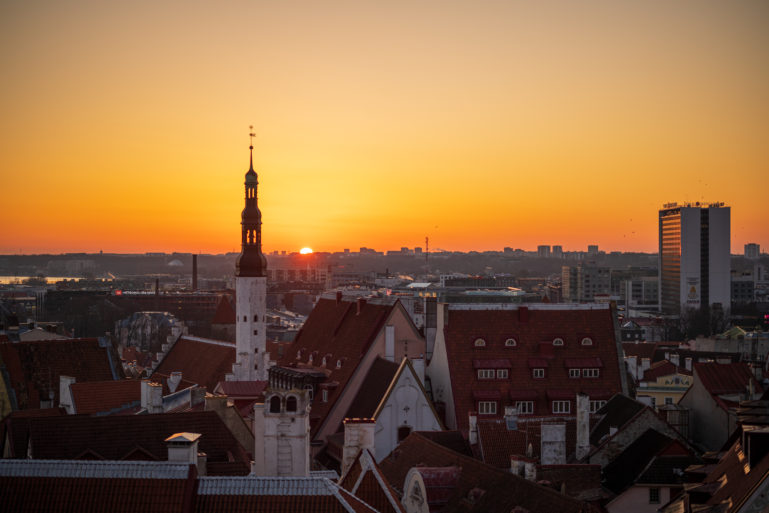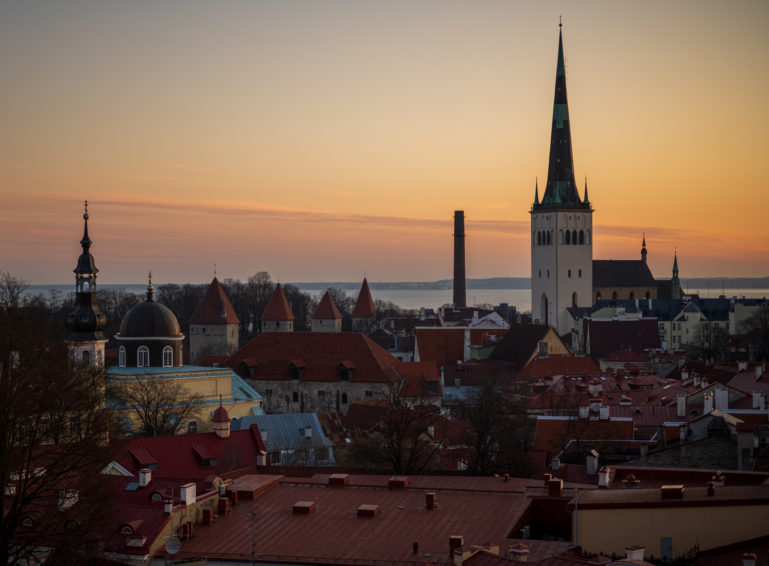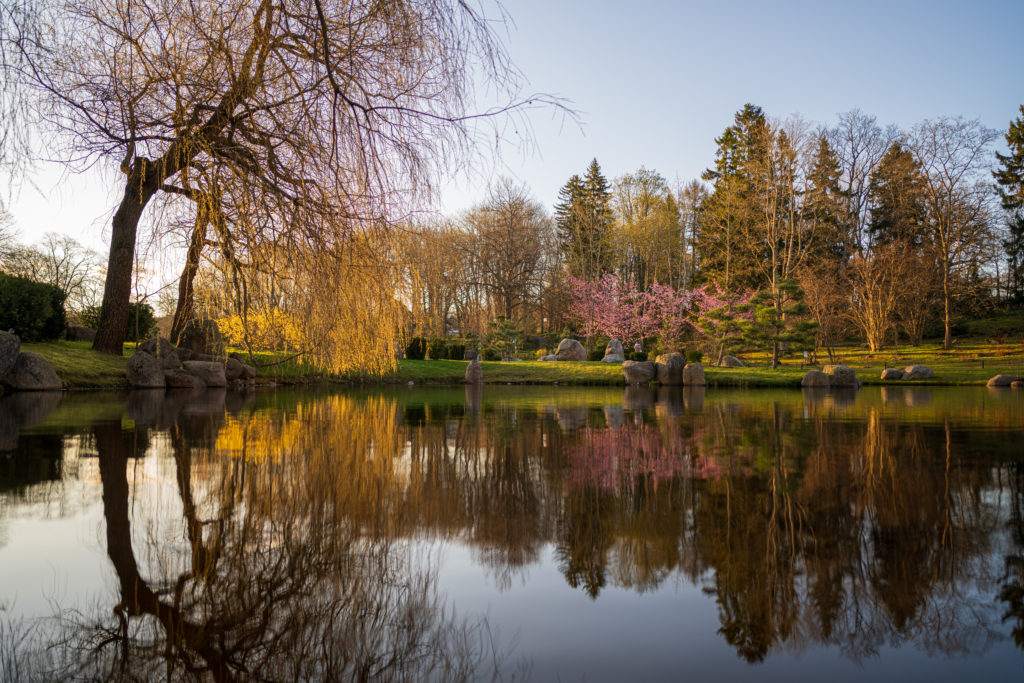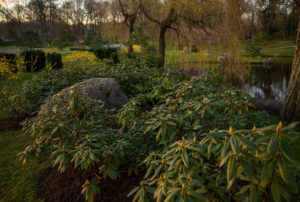Built up from the 13th to 16th centuries, when Tallinn – or Reval as it was known then – was a thriving member of the Hanseatic trade league, this enclosed neighbourhood of colourful, gabled houses, half-hidden courtyards and grandiose churches is, quite rightly, the city’s biggest tourist draw. And the fact that it’s all neatly packaged within a mostly-intact city wall and dotted with guard towers gives it an extra dose of fairytale charm. It’s small, compact, and very easily explored on foot.
Viru Gate
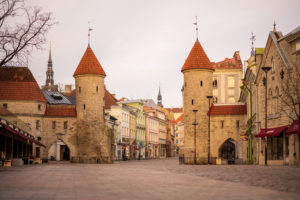 The barbican of Viru Gate was part of the defence system of Tallinn city wall built in the 14th century.
The barbican of Viru Gate was part of the defence system of Tallinn city wall built in the 14th century.
A couple of centuries later, it already had 8 gates that consisted of several towers and curtain walls connecting them. The main tower of a gate was always square and the barbicans were equipped with one or two small round towers.
As the entrances to the Old Town were widened, several gates were demolished. The Viru Gate had to pay its dues to a horse-drawn tram route that connected the Old Market with Kadriorg.
However, the corner towers were preserved; also, you can still see a part of the bastion that is called Musumägi. Viru Street with its many shops and restaurants has become one of the busiest pedestrian streets in the Old Town.
Medieval streets of Tallinn
 Tallinn is a medieval gem on the coast of the Baltic Sea. The heart of the city, the Old Town, has been under UNESCO World Heritage protection since 1997. There is much to be discovered in Tallinn both for first-time visitors and locals alike. We’ve made a checklist of the historic, the old, and above all else – the medieval – things to see, do and experience in Tallinn. See if you can check them all off, or maybe you’ve done so already!
Tallinn is a medieval gem on the coast of the Baltic Sea. The heart of the city, the Old Town, has been under UNESCO World Heritage protection since 1997. There is much to be discovered in Tallinn both for first-time visitors and locals alike. We’ve made a checklist of the historic, the old, and above all else – the medieval – things to see, do and experience in Tallinn. See if you can check them all off, or maybe you’ve done so already!
The Old Town’s streets are far from straight and seem to curve and bend in every which way, but they do so in the general direction of the Town Hall Square, the old marketplace.
St. Catherine’s Passage
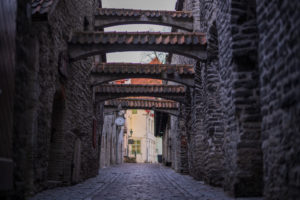
It connects Vene street with the Müürivahe street where the town’s famous knit market operates.
What makes the passage particularly interesting is that it’s home to the St. Catherine’s Guild, a collection of craft workshops where artists use traditional methods to create and sell glassware, hats, quilts, ceramics, jewellery, hand-painted silk and other wares. The workshops are housed in the small, 15th- to 17th-century rooms on the south side of the lane, and are set up in an open-studio fashion so visitors can watch the artists at work, be it glass-blowing, weaving or pottery making.
The tombstones exhibited on the south wall of the church are from the 14th to 15th centuries and are among the unique landmarks of St. Catherine’s Passage.
This was a popular place where one might often spot legendary musician Raimond Valgre, who lived nearby, or even find him jamming, seated on a keg of beer. Instruments were always close at hand as the courtyard housed a musical instrument repair shop.
As absorbing as these displays can be, St. Catherine’s passage is more about ambience than anything else. No other place in Tallinn combines creativity with a medieval atmosphere quite like it. Take a look on St. Catherein’s passage photos in Google Maps.
Easily the most picturesque of Old Town’s lanes, this half-hidden walkway runs behind what used to be St. Catherine’s Church.
Kiek in de Kök Fortification Museum
 Strong medieval fortification tower Kiek in de Kök (German for ‘peek in the kitchen’) got its name from a legend about some soldiers in the tower who liked to peek from the top of the tower into the kitchens in the town below.
Strong medieval fortification tower Kiek in de Kök (German for ‘peek in the kitchen’) got its name from a legend about some soldiers in the tower who liked to peek from the top of the tower into the kitchens in the town below.
The museum, located in the cannon tower and bastion passages, introduces the genesis of Tallinn, its development, as well as the most important war events from the 13th to the 18th century. In the arms room, you can explore historical weapons and try out a shooting simulator.
The tower offers unique views of the city and port. From there, you can visit the passages in the city wall, Neitsitorn Tower, Tallitorn Tower, the gate tower of Lühike Jalg, and the bastion passages.
Original Sokos Hotel Viru
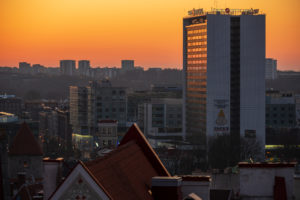
Original Sokos Hotel Viru is located in the heart of Tallinn, by the gates of the Old Town. There are many concert venues as well as commercial and entertainment centres nearby. You can access Viru Keskus, the trendiest shopping centre in the city that includes more than 100 service providers, straight from the hotel.
The hotel also welcome families: in addition to comfortable family rooms, we have children’s playrooms and reading nooks, as well as a children’s menu in our restaurant Amarillo.
Towers’ Square
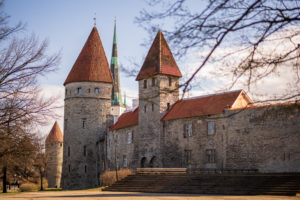
Towers Square gets its name from the Town Wall towers that border one of its sides, and the fact that a number of the church spires can be seen from here. In 1931-33 the square was turned into communal park. The area was refurbished in 1990 and a circular plaza was added in 2009. Now the square boasts playgrounds for children and fitness areas, and has become known for the Tallinn International Flower Festival, which takes place here every summer. With nearly 2km of its original city wall still standing, Tallinn boasts one of Europe’s best preserved Medieval fortifications. In fact, a large part of what gives Old Town its fairytale charm is the system of walls and and towers that surrounds it.
Towers Square owes its name to the towers of the Town Wall facing the place. In addition to this one can see the numerous spires of churches from this spot. In the Middle Ages this place was called Nunnakoppel (Nuns paddock) as it belonged to the convent functioning in the buildings of the present‑day Gustav Adolf School. During the 17−8th centuries the earth fortifications and the moat were constructed there. By the middle of the 19th century the fortifications lost there military significance. The moat at this part was filled in with earth in 1864 and the plot got the function of the hayfield. In 1896 the territory was turned into post of the beginning of the 1900th has been well preserved at the park. There were ca 75 species of ligneous plants growing at Tornide Square in autumn 2007.
Take a look on Towes’ Square images in Google Street View!
Japanese Garden in Kadriorg Park
An exquisite Japanese Garden, designed by renowned landscape architect Masao Sone, sits at the northeast corner of Kadriorg Park. A hidden corner of the park built several years ago (in 2011).
All those cobble stones, springs and carefully arranged trees can offer an absolutely unique atmosphere which is best enjoyed in the early morning (right after the sunrise when the city is still sleeping and there are no other living souls around).
Check out more from #visittallinn website and Google Street View.

